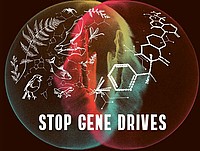16.11.2017 | permalink
Gene Drives Are Too Risky for Field Trials, Scientists Say
In 2013, scientists discovered a new way to precisely edit genes — technology called Crispr that raised all sorts of enticing possibilities. Scientists wondered if it might be used to fix hereditary diseases, for example, or to develop new crops.
One of the more intriguing ideas came from Kevin M. Esvelt and his colleagues at Harvard University: Crispr, they suggested, could be used to save endangered wildlife from extinction by implanting a fertility-reducing gene in invasive animals — a so-called gene drive.
When the genetically altered animals were released back into the wild, the fertility-reducing gene would spread through the population, eradicating the pests.



